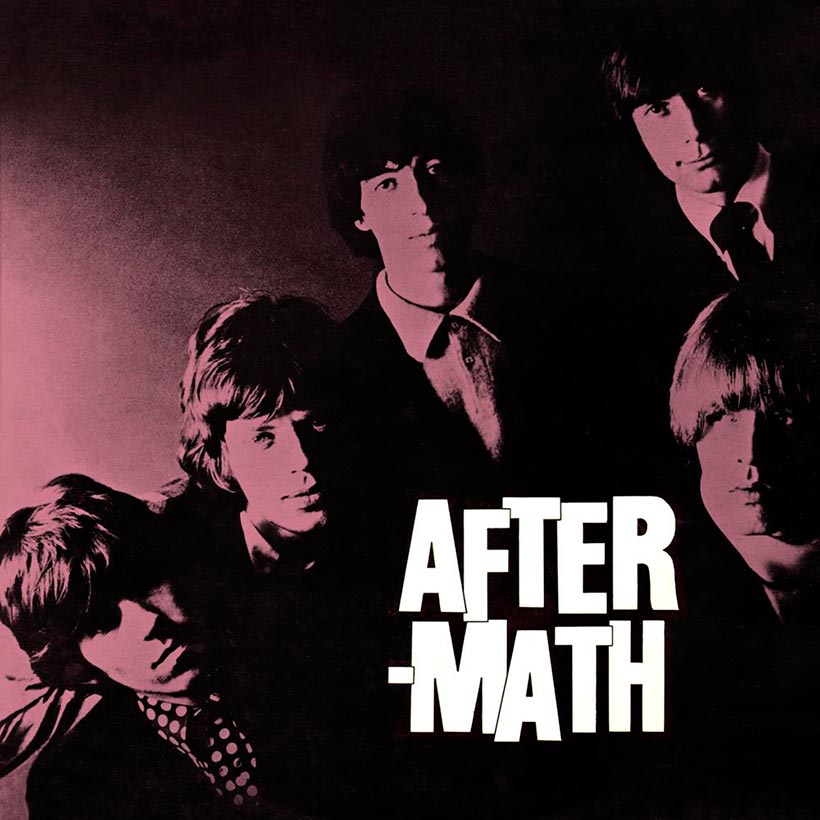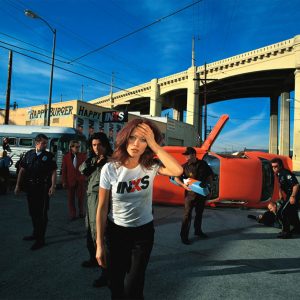Aftermath was a move in a different direction for The Rolling Stones – the kind of move that other bands were embracing at the time. The Beatles’ Rubber Soul album had signaled something of a change in rock music, and Revolver, released in August 1966, marked an even more significant shift. In America, The Beach Boys’ Pet Sounds had been recorded and was acclaimed upon its release between the UK and US releases of Aftermath.
Differences between the UK and US versions of Aftermath
Aftermath was The Rolling Stones’ fourth album in the UK, where it reached No.1 after being released by Decca Records on April 15, 1966. In the US, however, it was released on July 2, by London Records. After entering the Billboard chart on July 9, at No.117 (the highest new entry of the week – four places ahead of The Beatles’ Yesterday And Today) the album would spend six weeks climbing the charts on the way to its US peak of No.2, on August 13, nestling just one place behind The Beatles.
Listen to the UK version of Aftermath on Apple Music and Spotify.
Like its UK counterpart, the US version of Aftermath was a milestone for the band, in that it marked the first time that Mick Jagger and Keith Richards wrote every song on a Stones album. It was also the culmination of the adrenalin rush that had been the Stones’ first three years as a professional band: the pair infusing their songs with an attitude that has carried them through their entire career.
The US version of Aftermath differs from the UK version in one major way: it only has 11 tracks, whereas the UK version has 14. The US Aftermath was edited at the insistence of London Records, who wanted the album to conform to the normal standards of the day – 11 tracks were enough for any fan, in the view of the label, who had also vetoed the original album title of Could You Walk On The Water? for fear of antagonizing religious groups in America.
Paint It, Black
The US Aftermath also has one very significant track difference: it opens with “Paint It, Black,” a song that topped the Billboard Hot 100 on June 11, 1966, and stayed there for two weeks, and which provided the perfect springboard to launch the album into the US charts. The cohesion and overall sound and feel of Aftermath was improved by the inclusion of the band’s third American No.1 in less than a year.
Listen to the UK version of Aftermath on Apple Music and Spotify.
“Paint It, Black” was recorded at the same March 1966 session in Hollywood as much of the rest of Aftermath. Bill Wyman plays the bass pedals of a Hammond B3 organ by pummelling them with his fists, and Brian Jones plays sitar; both add to the unique sound of this standout track. As Richards said at the time, “What made ‘Paint It, Black’ was Bill Wyman on the organ, because it didn’t sound anything like the finished record until Bill said, ‘You go like this.’”
Different artwork
The front cover photo for Aftermath’s UK release was taken by Guy Webster, a celebrity photographer who went on to take photographs of Presidents Reagan and Clinton. The cover design was done by the band’s manager, Andrew Loog Oldham, who was credited as Sandy Beach.
For the US version of Aftermath, a color photograph by David Bailey was used, depicting the band against a blurred background that appealed to the psychedelic movement in America.
“Better than anything they’ve done before”
Aftermath is one of those albums that pushed pop in the direction of rock, no more so than with the song “Goin’ Home,” which, at over 11 minutes, signalled what lay ahead. As Loog Oldham, said, “‘Goin’ Home’ was praised by fans, critics and peers alike as a standout event on the recording. In 1965 only Dylan and the Stones had defied the three-minute law – and kicked open the doors to the future.” “Goin’ Home” was also a blues-inspired track, so for both the Stones and rock, this was a back-to-the-future moment.
According to Richards, “No one sat down to make an 11-minute track. I mean ‘Goin’ Home,’ the song was written just the first two and a half minutes. We just happened to keep the tape rolling, me on guitar, Brian on harp, Bill, Charlie and Mick. If there’s a piano, it’s Stu.”
Other standout cuts on Aftermath are “Lady Jane,” one of the band’s greatest ballads and the B-side of “Mother’s Little Helper” (which, following “Paint It, Black” as a single, appeared on the UK version of Aftermath, but not the US one). The clever “Under My Thumb” has remained one of the band’s most popular songs from the era, despite never being released as a single in either the US or the UK. There’s also the original version of “Out Of Time,” with Brian playing marimbas, that Chris Farlowe covered shortly after the Stones’ release, taking it to No.1 on the UK singles chart.
As Loog Oldham told a British music paper in April 1966, “Mick and Keith write about things that are happening. Everyday things. Their songs reflect the world about them. I think [Aftermath is] better than anything they’ve done before.”
It was impossible to disagree.
Listen to the best of The Rolling Stones on Apple Music and Spotify.




